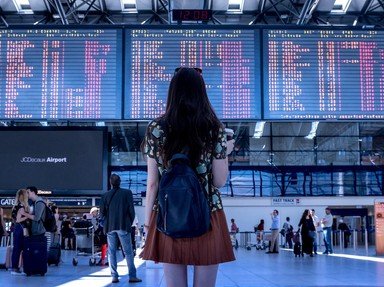Quiz Answer Key and Fun Facts
1. Qantas was very keen to expand operations once WWII was over. An order was made with the Lockheed company for four brand spanking new pressurised aeroplanes which became the backbone of the 'Kangaroo Route' Qantas became known for. Which Lockheed planes took Aussies around the world and back again?
2. The Kangaroo Route started in 1947, taking passengers to London from Melbourne and Sydney in a series of hops. In 1958, a new route to London opened up. Qantas took passengers from Australia to London via the Pacific Ocean and the USA rather than by the traditional route through Asia. What was this route called?
3. Gert Sellheim played a part in the history of Qantas. For what recognisable part of Qantas should Gert be remembered?
4. Qantas started flying regular scheduled passenger flights to southern Africa in 1952. By what very Australian name did this route become known?
5. In 1959, Qantas became the first airline in the world to have Boeing 707s in its fleet.
6. Qantas was the first airline in the world to use Boeing 747s exclusively in its fleet.
7. In 1989, a Qantas plane landed in Sydney Airport after flying from London to Sydney without a stop. This set a new record for distance flown by a commercial aircraft non-stop. Named after a major city in Australia, which Qantas aeroplane was it?
8. In 2003, the Australian federal government changed regulations to allow Qantas to operate a separate, low cost, domestic airline in addition to the domestic services it ran. What is the name of this airline?
9. In 2008, Qantas took delivery of its first A380, an Airbus plane. In a long tradition of naming planes after Australian cities and people, the first A380 was named after an Australian aviatrix, the first woman to gain a commercial pilot's licence in the country. Who was this remarkable woman?
10. You've had your curiosity piqued about Qantas, its history, and its planes? Need to see more? Where can you find the Qantas Founders' Museum which opened in 1996?
Source: Author
Tizzabelle
This quiz was reviewed by FunTrivia editor
trident before going online.
Any errors found in FunTrivia content are routinely corrected through our feedback system.

